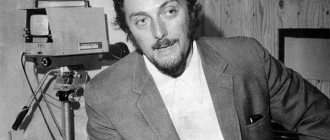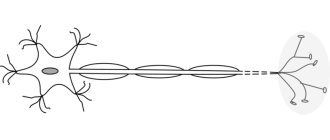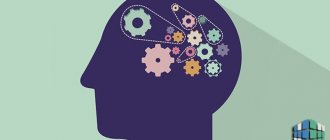Man and the characteristics of his personality have been the object of interest and study of the great minds of mankind for centuries. And from the very beginning of the development of psychological science to the present day, people have been able to develop and significantly improve their skills in this difficult but exciting matter. Therefore, now, in order to obtain reliable data in the study of the characteristics of the human psyche and his personality, people use a large number of different methods and methods of research in psychology. And one of the methods that has gained the greatest popularity and has proven itself from the most practical side is a psychological experiment.
We decided to consider individual examples of the most famous, interesting and even inhumane and shocking socio-psychological experiments that were carried out on people, regardless of the general material, due to their importance and significance. But at the beginning of this part of our course, we will once again remember what a psychological experiment is and what its features are, and we will also briefly touch on the types and characteristics of the experiment.
What is an experiment?
An experiment in psychology is a certain experiment that is carried out under special conditions in order to obtain psychological data through the intervention of a researcher in the process of the subject’s activity. Both a specialist scientist and a simple layman can act as a researcher during an experiment.
The main characteristics and features of the experiment are:
- The ability to change any variable and create new conditions to identify new patterns;
- Possibility to choose a starting point;
- Possibility of repeated implementation;
- The ability to include other methods of psychological research in the experiment: test, survey, observation and others.
The experiment itself can be of several types: laboratory, natural, pilot, explicit, hidden, etc.
If you have not studied the first lessons of our course, then you will probably be interested to know that you can learn more about experiments and other research methods in psychology in our lesson “Methods of Psychology.” Now we move on to consider the most famous psychological experiments.
The most famous psychological experiments
- Hawthorne experiment
- Milgram experiment
- Stanford prison experiment
- Ringelmann experiment
- Experiment “Me and Others”
- "Monstrous" experiment
- Project "Aversia"
- Landis experiments
- Little Albert
- Acquired (learned) helplessness
- Boy raised like a girl
1
Advantages and disadvantages
Not so long ago, there was an opinion that a laboratory experiment is preferable to a natural one, since it gives the experimenter the opportunity to:
- more accurate registration, measurement of parameters of the phenomenon being studied,
- dose and plan to change the influence of stimuli,
- neutralize factors that create interference during the experiment,
- create comparable conditions.
In the process of development of psychology, more and more often, the opinion is heard that a laboratory experiment does not give reliable results precisely because of its artificial nature, which introduces drastic changes in the psychological processes of the subject, and, as a result, significantly distorts the result.
Modern methods of conducting a natural or field experiment make it possible not to change a person’s behavior during the experiment; sometimes the subject takes part in the experiment without even knowing about it, or the presence of the experimenter is unobtrusive, observational in nature, which makes the subject forget about the experiment being conducted, and his behavior, in his usual environment, is no different from his everyday behavior.
Image by mohamed Hassan from Pixabay
All this makes it possible to use all the strengths of a laboratory experiment, with minimal distortion of the result. But there remains one feature that does not change: the experimenter’s ability to control additional variables is limited. This is the main specificity of a natural experiment.
Hawthorne experiment
The name Hawthorne experiment refers to a series of socio-psychological experiments that were carried out from 1924 to 1932 in the American city of Hawthorne at the Western Electrics factory by a group of researchers led by psychologist Elton Mayo. The prerequisite for the experiment was a decrease in labor productivity among factory workers. Studies that have been conducted on this issue have not been able to explain the reasons for this decline. Because The factory management was interested in increasing productivity; the scientists were given complete freedom of action. Their goal was to identify the relationship between physical working conditions and worker performance.
After much research, scientists came to the conclusion that labor productivity is influenced by social conditions and, mainly, by the emergence of workers’ interest in the work process, as a consequence of their awareness of their participation in the experiment. The mere fact that workers are allocated to a separate group and special attention from scientists and managers is shown to them already affects the effectiveness of workers. By the way, during the Hawthorne experiment, the Hawthorne effect was discovered, and the experiment itself increased the authority of psychological research as scientific methods.
Knowing about the results of the Hawthorne experiment, as well as the effect, we can apply this knowledge in practice, namely, have a positive impact on our activities and the activities of other people. Parents can improve their children's development, teachers can improve student achievement, and employers can improve their employees' performance and productivity. To do this, you can try to announce that some kind of experiment will be taking place, and the people to whom you are announcing this are an important component of it. For the same purpose, you can apply the introduction of any innovations. But you can learn more about this here.
You can find out more about the Hawthorne Experiment here.
2
Experimental process
Psychologists, like other scientists, use the scientific method when conducting experiments. The scientific method is a set of procedures and principles that guide how scientists develop research questions, collect data, and draw conclusions. There are four main stages of the process:
- Formation of a hypothesis.
- Research design and data collection.
- Analyzing data and drawing conclusions.
- Sharing results.
Milgram experiment
The Milgram experiment was first described by an American social psychologist in 1963. His goal was to find out how much suffering some people can cause to others, and innocent people, provided that this is their job responsibilities. Participants in the experiment were told that the effect of pain on memory was being studied. And the participants were the experimenter himself, a real subject (“teacher”), and an actor who played the role of another subject (“student”). The “student” had to memorize words from the list, and the “teacher” had to test his memory and, in case of an error, punish him with an electric shock, each time increasing its strength.
Initially, the Milgram experiment was conducted to find out how the inhabitants of Germany could take part in the destruction of huge numbers of people during the Nazi terror. As a result, the experiment clearly demonstrated the inability of people (in this case, “teachers”) to resist a boss (researcher) who ordered the “work” to continue, despite the fact that the “student” was suffering. As a result of the experiment, it was revealed that the need to obey authorities is deeply rooted in the human mind, even under conditions of internal conflict and moral suffering. Milgram himself noted that under the pressure of authority, adequate adults are capable of going very far.
If we think about it for a while, we will see that, in fact, the results of Milgram's experiment tell us, among other things, about the inability of a person to independently decide what to do and how to behave when someone is “above him” higher in rank, status, etc. The manifestation of these features of the human psyche, unfortunately, very often leads to disastrous results. In order for our society to be called truly civilized, people must learn to always be guided by human attitudes towards each other, as well as by ethical standards and moral principles that their conscience dictates to them, and not the authority and power of other people.
You can read the details of Milgram's experiment here.
3
Experimental psychology. Lecture course
History of the development of experimental psychology. The role of the experimental method in psychological research
Lecture outline
1. Historical contexts for the development of psychological knowledge.
2. Experimental method in psychology. Wilhelm Wundt.
3. Experimental study of higher mental functions. Hermann Ebbinghaus.
4. Structural direction of experimental psychology and functionalism.
5. Applied aspects of experimental psychology.
6. Experimental psychological research in Russian psychology.
1. Historical contexts for the development of psychological knowledge.
Psychology is one of the most ancient sciences and at the same time one of the youngest. Emphasizing this inconsistency, the German psychologist G. Ebbinghaus said that psychology has a very long prehistory and a very short history of its own. Psychology has been developing for thousands of years in the bosom of philosophical knowledge, comprehension and explanation of the world; its own history begins in the middle of the 19th century, when it became an independent science.
Since mythological times, man has been preoccupied with his own experiences, suffering, passions, behavior, and attitude towards the world around him, which was expressed in the spiritualization of the body and natural things, in the attribution of a special mysterious intangible substance called “spirit” to the body and surrounding objects.
In later times, reflections on human nature form a significant part of philosophical and theological treatises. Already in the VI-V centuries. BC e. Heraclitus, Anaxagoras, Democritus, Socrates, Plato, Aristotle and other ancient thinkers were interested in many of the same problems that psychologists are still working on today: the nature of sensations, perception, memory and their mechanisms, motivations, affects, passions, learning, types of activity, characteristics character, pathology of behavior, etc.
By the middle of the 19th century. the use of the experimental method in understanding human nature did not pose a particular problem. Firstly, the rejection of medieval authoritarianism and scholasticism in the natural sciences, accompanied by the widespread spread of various forms of experiment in them, had become an established fact by that time. Secondly, many natural scientists (physicists, doctors, biologists, physiologists) in their practical activities increasingly encountered phenomena, the understanding of which required specific knowledge about the structure of the human body, especially about the work of its sense organs, motor apparatus and brain mechanisms.
Already from the middle of the 18th century. In physiology, a variety of experimental methods are used: artificial stimulation of a drug or a living organ, registration or observation of the responses caused by this stimulation, simple mathematical processing of the data obtained. In the “Manual of Human Physiology” by the German biologist I. Müller
(1801-1858) reflected the richest experience in physiological research into all functions of the human body.
In the middle of the 19th century. Scottish doctor M. Hall
(1790-1857) and professor of natural science at the French College in Paris
P. Florence
(1794-1867), while studying the functions of the brain, widely used the method of extirpation (removal), when the function of a certain part of the animal’s brain is established by removing or destroying this part with subsequent observation of changes in his behavior.
In 1861, the French surgeon P. Broca
(1824-1880) proposed a clinical method - post-mortem study of the structure of the brain in order to detect damaged areas that were responsible for behavior. They opened the brain of the deceased and looked for damage that caused the abnormal behavior during the patient’s life. For example, as a result of a study of the brain of a man who was unable to speak clearly during his lifetime, the “speech center” (the third frontal gyrus of the cerebral cortex) was discovered.
The development of experimental physiology led to consequences that had a decisive influence on the anthropological sciences of that time: factual material related to various aspects of the life of organisms rapidly increased; the data obtained in experiments could not be established speculatively; many life processes that were previously the exclusive subject of religious and philosophical reflection received new, mainly mechanistic explanations that placed these processes on a par with the natural course of things.
The development of psychology as an independent science begins with experimental psychology, the origins of which were German scientists. For the first time, experimental methods of studying consciousness were used by G. Helmholtz (1821-1894), E. Weber (1795-1878), G. Fechner (1801-1887), W. Wundt (1832-1920).
The rapidly developing physiology of the nervous system gradually conquered more and more space from philosophy. German physicist and physiologist G. Helmholtz
(1821-1894), taking measurements of the speed of nerve impulses, began research on vision and hearing, which became the basis for the development of the psychology of perception. His theory of color perception affected not only the peripheral aspects studied by the physiology of the sense organs, but also many centrally determined phenomena that could not yet be controlled experimentally and fully (for example, his resonance theory of auditory perception).
German physiologist E. Weber
(1795-1878), whose main scientific interest was related to the physiology of the sensory organs, studied cutaneous and kinesthetic sensitivity. His experiments with touch confirmed the existence of a sensory threshold, in particular, a two-point threshold. By varying the sites of skin irritation, he showed that the value of this threshold is not the same, and explained this difference. Thanks to the work of E. Weber, it became obvious not only the possibility of measuring human sensations, but also the existence of strict patterns in conscious sensory experience.
G. Fechner studied the laws of connection between mental and physical phenomena
(1801-1887), founder of psychophysics. Deep knowledge of the physiology of the sense organs, physical and mathematical education, and philosophical knowledge were integrated into a simple but brilliant idea, later formulated as a basic psychophysical law. G. Fechner developed psychophysical methods that have become classic: the method of boundaries, the method of constant stimuli and the installation method. They have become a powerful tool for solving scientific problems not only in psychophysics, but also in general psychology.
2. Experimental method in psychology. Wilhelm Wundt.
From the middle of the 19th century. A situation is emerging when it becomes possible to apply experimental methods of the natural sciences to the study of philosophical and psychological problems of the relationship between soul and body, mental and physical. Despite the fact that the formation of the theoretical and methodological foundations of psychology was influenced by such ancient sciences as philosophy, medicine, biology, it is believed that the modern approach in psychology dates back to the formation in 1879 of the first psychological laboratory in Leipzig, headed by a German physiologist , philosopher, psychologist Wilhelm Wundt.
Wilhelm Wundt
(1832-1920) entered the university at the Faculty of Medicine, but realized that medicine was not his calling, and devoted himself to the study of physiology. In 1855 (at the age of 23) he received his doctorate and for ten years he lectured and worked as a laboratory assistant for G. Helmholtz in Heldelberg. In 1875 he became a professor of philosophy at the University of Leipzig, where he worked for 45 years. This was the most important period of his scientific career.
In 1879, W. Wundt founded the famous psychological laboratory, in 1881 - the magazine “Philosophical Teachings” (since 1906 “Psychological Teachings”), the printed organ of his laboratory and new science. Similar laboratories were subsequently formed in France, England, the USA, Russia, Japan, and Italy. In Moscow in 1912, a laboratory was equipped that became an exact copy of Wundt’s.
The main works of W. Wundt, reflecting the results of his research, are: “Towards the Theory of Sensory Perception” (1858-1862), “Elements of Psychophysics” (1860), “Lectures on the Soul of Man and Animals” (1863), “Fundamentals of Physiological Psychology” (1873, 1874). Having founded a laboratory and a journal, W. Wundt, along with experimental research, turned to philosophy, logic, and aesthetics (1881-1890). At the end of his life, he published a ten-volume work, “The Psychology of Nations” (1900-1920). For the period from 1853 to 1920. V. Wundt prepared more than 54 thousand pages of scientific text, i.e. he wrote 2.2 pages daily. Most of the scientist’s works have been translated into Russian.
W. Wundt's psychology was based on experimental methods of the natural sciences, primarily on physiology. The subject of research was consciousness. The basis of the conceptual views were empiricism (a direction in the theory of knowledge that recognizes sensory experience as the only source of reliable knowledge) and associationism (a direction in psychology that explains the dynamics of mental processes by the principle of association).
V. Wundt believed that consciousness is the essence of the psyche, a complex phenomenon, for the study of which the method of analysis, or reductionism, is best suited. He noted that the first step in the study of any phenomenon should be a complete description of its constituent elements.
According to the scientist, psychology should study, first of all, direct experience, which is cleared of all kinds of interpretations and “pre-experimental” knowledge, from the indirect experience that knowledge provides. This experience is not part of direct experience.
The main method of the new science was introspection
- a method of psychological research, which consists in observing one’s own mental processes without using any tools or standards. Since psychology is the science of the experience of consciousness, this means that the method must involve observations of one’s own consciousness. To obtain information about the senses, the researcher used a stimulus and then asked the subject to describe the sensations received.
Experiments on introspection, or internal perception, were carried out in the Leipzig laboratory according to strict rules: precise determination of the moment when the experiment began; observers should not reduce their level of attention; the experiment must be carried out several times; The experimental conditions must be acceptable for changing and monitoring changes in irritant factors.
Introspective analysis was associated not with qualitative introspection (when the subject described his internal experience), but with the subject’s direct ideas about the magnitude, intensity, range of action of the physical stimulus, reaction time, etc. Thus, conclusions about the elements and processes of consciousness were made based only on objective assessments.
The Leipzig laboratory studied the psychological and physiological aspects of vision and hearing and other senses. Visual sensations and perceptions (psychophysics of color, color contrast, peripheral vision, negative afterimage, glare, three-dimensional vision, optical illusions), tactile sensations, as well as the “sense” of time (perception or assessment of different periods of time) were studied. Particular attention was paid to experiments aimed at studying the time and speed of reaction, attention and feelings, and verbal associations.
Thus, W. Wundt can be called the founder of modern psychology. Thanks to him, a new branch of science arose - experimental psychology. He tried to develop a rigorous theory of the nature of human thinking. W. Wundt conducted research in a specially created laboratory and published the results in his own journal. Some of Wundt's followers founded laboratories and continued his research, achieving remarkable results [42].
3. Experimental study of higher mental functions. Hermann Ebbinghaus
.
Just a few years after W. Wundt’s statement about the impossibility of experimental research of higher mental functions, the German lone psychologist G. Ebbinghaus
(1850-1909), who worked outside of any universities, began to successfully use experiment to study the processes of memory, learning, etc.
G. Ebbinghaus's study of the processes of learning and forgetting is an example of brilliant work in experimental psychology - the first experience in considering purely psychological, rather than psychophysiological, problems. Over the course of five years, G. Ebbinghaus conducted a series of serious studies on himself. He argued that the difficulty of the material being learned can be assessed by the number of repetitions for its subsequent error-free reproduction. Nonsense lists of three-letter syllables were used as memorization material. Finding such combinations was an extremely difficult task for G. Ebbinghaus: he spoke English, French as well as his native German, and studied Latin and Greek.
Syllables should be selected in such a way as not to evoke associations. His nonsense syllables usually consisted of two consonants and one vowel (for example, lef, bok
or
aus, tap, sip
, etc.). He wrote down all possible letter combinations, resulting in 2,300 syllables, from which he randomly chose syllables to learn. Moreover, not only individual syllables, but also the text (list of syllables) as a whole had to be meaningless.
During the experiments, the characteristics of learning and memorization under different conditions, the difference in the speed of memorizing nonsense syllables and meaningful material, and the dependence of the volume of memorized material on the number of repetitions were determined. G. Ebbinghaus's research was distinguished by its thoroughness, strict control over compliance with experimental conditions, and mathematical analysis of data.
His other important works are On Memory; "Principles of Psychology" (1902); "Essays on Psychology" (1908).
G. Ebbinghaus did not make a major theoretical contribution to psychology; he did not create a psychological system, did not found his own school, and did not educate students. His place in the history of psychology is determined by the fact that he laid the foundation for the experimental study of memory processes.
4. Structural direction in experimental psychology and functionalism.
Initially, experimental psychology developed within the framework of a structural direction for the study of problems of consciousness, following mainly the traditions of the methodological approach of R. Descartes.
The first psychological laboratories and psychological research (W. Wundt, G. Ebbinghaus, G. Müller, O. Külpe, V. M. Bekhterev, E. Kraepelin, G. I. Chelpanov, I. A. Sikorsky, etc.) were directed to identify the structure and elements of consciousness (as the main subject of psychology). Psychology at this stage was accumulating empirical material, developing methodology and tools for studying mental phenomena. There was no talk of widespread applied use of the acquired knowledge. This position in its extreme was clearly expressed by E. Titchener
(1867-1927), an American psychologist, student of W. Wundt. He believed that structural psychology was a "pure science" with no practical value, and he believed that scientists should not worry about the practical value of their research.
But at the same time, another direction in psychology emerged - functionalism, which developed in the 19th century - AD. XX century primarily in American experimental psychology, and became a conscious protest against structural psychology (“pure science”), which has no applied significance.
Functionalism
- a scientific direction in psychology that studies problems related to the role of the psyche in the adaptation of the body to environmental conditions. Representatives of functional psychology are F. Galton, W. James, D. Dewey, D. Angell, G. Carr and their followers, who developed applied aspects of psychology (S. Hall, J. Cattell, A. Binet, etc.).
Adherents of functionalism did not strive for the formal formation of their own scientific school, but, studying the behavior of an organism in terms of its interaction with the environment, they became interested in the practical application of the results of psychological research in solving everyday problems.
English psychologist and anthropologist F. Galton
(1822-1911) used statistical methods, questionnaires and psychological tests when studying problems of mental heredity and individual differences in the development of children. The ultimate goal of the research was to promote the birth of “high-quality” individuals and prevent the birth of “low-quality” ones. F. Galton created a new science of eugenics, which dealt with factors that could improve the hereditary qualities of people, and argued that the human race, like domestic animals, could be improved through artificial selection. To do this, it is necessary that talented people are selected from the general mass and married only to each other for many generations. F. Galton was the first to develop tests of mental abilities in order to select highly gifted men and women for further breeding work, although science owes the appearance of this term to the American psychologist D. Cattell, a student of W. Wundt.
To substantiate research data, ensure their objectivity, reliability and validity, F. Galton used statistical methods. F. Galton's work in the field of statistics also led to the discovery of one of the most important quantities - correlation, the first mention of which appeared in 1888. With the support of F. Galton, his student K. Pearson developed a formula for determining the correlation coefficient, which is called "Pearson correlation coefficient". Subsequently, based on the work of F. Galton, many other methods of statistical assessments were developed and used to analyze the results of psychological research.
The final version of functionalism is set out in the book of the American psychologist G. Carr “Psychology” (1925), which states that the subject of the study of psychology is mental activity, i.e. processes such as perception, memory, imagination, thinking, feelings, will; the function of mental activity is to acquire, record, store, organize and evaluate experiences and use them to guide behavior. This direction of psychological theoretical research corresponded to the needs and demands of the economic and social development of American society. The scope of applied psychology began to expand rapidly.
5. Applied aspects of experimental psychology.
One of the “pioneers” in American psychology, who took up its applied aspects in the field of school education, is
S. Hall
(1844-1924), the organizer of the first psychological laboratory at Johns Hopkins University (1883). When studying child psychology, S. Hall widely used the questionnaire method, which he became acquainted with in Germany. By 1915, S. Hall and his students had developed and successfully used 194 questionnaires for a variety of studies.
A significant contribution to the development of the foundations of psychodiagnostics as an applied aspect of experimental psychology was made by D. Cattell
(1860-1944). In one of the articles he wrote in 1890, a definition of tests of mental abilities (tests of motor, or sensorimotor abilities) appeared. While working at the University of Pennsylvania, D. Cattell administered a series of such tests to his students and, by 1901, had collected enough information to establish a connection between test results and student academic performance. The results were disappointing. Comparing them with similar ones obtained in the laboratory of E. Titchener, D. Cattell came to the conclusion that such tests cannot serve as an indicator of academic performance in college, and, consequently, the mental abilities of students.
End of introductory fragment.
Stanford prison experiment
The Stanford Prison Experiment was conducted by American psychologist Philip Zimbardo in 1971 at Stanford. It examined a person’s reaction to the conditions of imprisonment, restriction of freedom and the influence of an imposed social role on his behavior. Funding was provided by the US Navy to explain the causes of conflict in the Marine Corps and Navy correctional facilities. Men were selected for the experiment, some of whom became “prisoners”, and the other part became “guards”.
The “guards” and “prisoners” very quickly got used to their roles, and sometimes very dangerous situations arose in the makeshift prison. A third of the “guards” showed sadistic tendencies, and the “prisoners” received severe moral trauma. The experiment, designed to last two weeks, was stopped after just six days, because... it started to get out of control. The Stanford prison experiment is often compared to the Milgram experiment described above.
In real life, you can see how any justifying ideology supported by the state and society can make people overly susceptible and submissive, and the power of authorities has a strong impact on the personality and psyche of a person. Observe yourself and you will see clear evidence of how certain conditions and situations influence your internal state and shape your behavior more strongly than the internal characteristics of your personality. It is very important to be able to always remain yourself and remember your values in order not to be influenced by external factors. And this can only be done with the help of constant self-control and awareness, which, in turn, require regular and systematic training.
Details of the Stanford Prison Experiment can be found by following this link.
4
History and present situation
Image by Gerd Altmann from Pixabay
Psychology, as a scientific discipline, is a relatively young science.
She studies the patterns, development and, directly, the functioning of the human psyche, his mental activity, as well as interaction within social groups.
Psychology has the following areas in its structure:
- the study of the mechanisms and laws of human mental activity - fundamental psychology;
- the study of mental phenomena of human activity, the reaction of the human psyche to changes in the environment and society, in natural conditions - applied psychology, which is based on research in fundamental psychology;
- the practical application of psychological knowledge in a person’s everyday life, in relation to his activities in society and the natural environment - practical psychology, and this direction, accordingly, is directly related to the research of the first two directions.
I would like to note that practical psychology is very closely interconnected with psychiatry. Their joint research in the field of recognition and treatment of mental disorders, direct impact on the physiology of human orgasm through the psyche, solving problems of a psycho-emotional nature, problems of personality development are very significant, they are difficult to overestimate.
Great Social Experiments
Ringelmann experiment
The Ringelmann experiment (also known as the Ringelmann effect) was first described in 1913 and conducted in 1927 by French professor of agricultural engineering Maximilian Ringelmann. This experiment was carried out out of curiosity, but revealed a pattern of reduction in people's productivity depending on the increase in the number of people in the group in which they work. For the experiment, a random selection of different numbers of people was carried out to perform a certain job. In the first case it was weight lifting, and in the second it was tug of war.
One person could lift a maximum weight of, for example, 50 kg. Therefore, two people should have been able to lift 100 kg, because the result should increase in direct proportion. But the effect was different: two people were able to lift only 93% of the weight that they could lift 100% of individually. When the group of people was increased to eight people, they only lifted 49% of the weight. In the case of tug of war, the effect was the same: increasing the number of people reduced the percentage of efficiency.
We can conclude that when we rely only on our own strengths, we make maximum efforts to achieve results, and when we work in a group, we often rely on someone else. The problem lies in the passivity of actions, and this passivity is more social than physical. Solitary work gives us the reflex to achieve the maximum from ourselves, but in group work the result is not so significant. Therefore, if you need to do something very important, then it is best to rely only on yourself and not count on the help of other people, because then you will give it your all and achieve your goal, and what is important to other people is not so important to you.
More information about the Ringelmann experiment/effect can be found here.
5
Experiment “Me and Others”
“Me and Others” is a 1971 Soviet popular science film that features filming of several psychological experiments, the progress of which is commented on by a narrator. The experiments in the film reflect the influence of the opinions of others on a person and his ability to think out what he was unable to remember. All experiments were prepared and conducted by psychologist Valeria Mukhina.
Experiments shown in the film:
- “Assault”: subjects must describe the details of an impromptu attack and recall the characteristics of the attackers.
- “Scientist or killer”: subjects are shown a portrait of the same person, having previously imagined him as a scientist or a killer. Participants must create a psychological portrait of this person.
- “Both white”: black and white pyramids are placed on the table in front of the child participants. Three of the children say that both pyramids are white, testing the fourth for suggestibility. The results of the experiment are very interesting. Later, this experiment was carried out with the participation of adults.
- “Sweet salty porridge”: three quarters of the porridge in the plate is sweet, and one quarter is salty. Three children are given porridge and they say it is sweet. The fourth is given a salty “plot”. Task: check what a child who has tried the salty “plot” will name the porridge when the other three say it is sweet, thereby checking the importance of public opinion.
- “Portraits”: participants are shown 5 portraits and asked to find out if there are two photos of the same person among them. At the same time, all participants, except one who came later, must say that two different photos are photos of the same person. The essence of the experiment is also to find out how the opinion of the majority influences the opinion of one.
- “Shooting Range”: in front of the student there are two targets. If he shoots on the left, then a ruble will fall out, which he can take for himself, if on the right, then the ruble will go to the needs of the class. More hit marks were initially made on the left target. You need to find out which target the student will shoot at if he sees that many of his comrades were shooting at the left target.
The vast majority of the results from the experiments in the film showed that people (children and adults alike) care deeply about what others say and their opinions. It’s the same in life: very often we give up our beliefs and opinions when we see that the opinions of others do not coincide with our own. That is, we can say that we are losing ourselves among the others. For this reason, many people do not achieve their goals, betray their dreams, and follow the lead of the public. You need to be able to maintain your individuality in any conditions and always think only with your own head. After all, first of all, it will serve you well.
You can read about the film “Me and Others” in more detail, as well as watch the film itself on this page.
By the way, in 2010 a remake of this film was made, in which the same experiments were presented. If you wish, you can find both of these films online.
6
Methods and tools
Various methods are used to collect information in a natural experiment.
- Statement of the problem: can be done orally or in writing.
In the formulation of the problem there is a necessary deviation from the natural course of familiar events. Observing the process, the behavior of the subject during the decision process, allows you to confirm or refute the hypothesis put forward.
- Training experiment: the process of teaching the necessary skills itself allows you to observe the formation and development of the personality qualities of the subject.
This method is also called a formative experiment.
- An extraordinary method is the method of changing the operating conditions.
The essence of the method is a purposeful change in the habitual algorithms of the subject’s actions in the course of performing processes that are standard for his professional or everyday life.
Photo by Markus Spiske on Unsplash
This allows you to track the flexibility of skills, as well as evaluate the role and significance of variable inputs.
- A modeling method that is closest in structure to laboratory methods.
It is used if research in natural conditions is difficult due to its complexity or inaccessibility. Then a model is created that is closest to the required one, and the phenomenon is studied using this model.
"Monstrous" experiment
A monstrous experiment in its essence was conducted in 1939 in the USA by psychologist Wendell Johnson and his graduate student Mary Tudor in order to find out how susceptible children are to suggestion. 22 orphans from the city of Davenport were selected for the experiment. They were divided into two groups. Children from the first group were told how wonderful and correct they spoke, and were praised in every possible way. The other half of the children were convinced that their speech was full of shortcomings, and they were called pathetic stutterers.
The results of this monstrous experiment were also monstrous: the majority of children from the second group, who did not have any speech defects, began to develop and take root all the symptoms of stuttering, which persisted throughout their entire lives. The experiment itself was hidden from the public for a very long time so as not to damage Dr. Johnson’s reputation. Then, nevertheless, people learned about this experiment. Later, by the way, similar experiments were carried out by the Nazis on concentration camp prisoners.
Looking at the life of modern society, you are sometimes amazed at how parents raise their children these days. You can often see how they scold their children, insult them, call them names, and call them very unpleasant names. It is not surprising that young children grow up to be people with broken psyches and developmental disabilities. We need to understand that everything that we say to our children, and especially if we say it often, will eventually be reflected in their inner world and the development of their personality. We need to carefully monitor everything we say to our children, how we communicate with them, what kind of self-esteem we form and what values we instill. Only healthy upbringing and true parental love can make our sons and daughters adequate people, ready for adulthood and capable of becoming part of a normal and healthy society.
More detailed information about the “monstrous” experiment is here.
7
Project "Aversia"
This terrible project was carried out from 1970 to 1989 in the South African army under the “leadership” of Colonel Aubrey Levin. This was a secret program aimed at clearing the ranks of the South African army of persons of non-traditional sexual orientation. According to official data, about 1,000 people became “participants” in the experiment, although the exact number of victims is unknown. To achieve a “good” goal, scientists used a variety of means: from drugs and electroshock therapy to chemical castration and sex change operations.
The Aversia project failed: it was impossible to change the sexual orientation of military personnel. And the “approach” itself was not based on any scientific data about homosexuality and transsexuality. Many victims of this project were never able to rehabilitate themselves. Some committed suicide.
Of course, this project concerned only people of non-traditional sexual orientation. But if we talk about those who are different from the rest in general, then we can often see that society does not want to accept people “different” from the rest. Even the slightest manifestation of individuality can cause ridicule, hostility, misunderstanding and even aggression on the part of the majority of “normal” people. Each person is an individual, a person with his own characteristics and mental properties. The inner world of every person is a whole universe. We have no right to tell people how they should live, speak, dress, etc. We should not try to change them if their “wrongness,” of course, does not harm the life and health of others. We must accept everyone as they are, regardless of their gender, religion, political or even sexuality. Everyone has the right to be themselves.
More details about the Aversia project can be found at this link.
8
Landis experiments
Landis's experiments are also called "Spontaneous Facial Expressions and Compliance." A series of these experiments was conducted by psychologist Carini Landis in Minnesota in 1924. The purpose of the experiment was to identify general patterns of work of facial muscle groups that are responsible for the expression of emotions, as well as to search for facial expressions characteristic of these emotions. The participants in the experiments were Landis' students.
To more clearly display facial expressions, special lines were drawn on the subjects’ faces. After this, they were presented with something capable of causing strong emotional experiences. For disgust, students sniffed ammonia, for arousal they watched pornographic pictures, for pleasure they listened to music, etc. But the most widespread response was caused by the last experiment, in which the subjects had to cut off the head of a rat. And at first, many participants flatly refused to do this, but in the end they did it anyway. The results of the experiment did not reflect any pattern in the expressions of people's faces, but they showed how ready people are to obey the will of authorities and are able, under this pressure, to do things that they would never do under normal conditions.
It’s the same in life: when everything is great and turns out as it should, when everything goes as usual, then we feel like confident people, have our own opinion and maintain our individuality. But as soon as someone puts pressure on us, most of us immediately stop being ourselves. Landis's experiments once again proved that a person easily “bends” under others, ceases to be independent, responsible, reasonable, etc. In fact, no authority can force us to do what we do not want. Moreover, if this entails causing harm to other living beings. If every person is aware of this, then, quite possibly, this will be able to make our world much more humane and civilized, and life in it more comfortable and better.
You can read more about Landis' experiments here.
9
Little Albert
An experiment called “Little Albert” or “Little Albert” was conducted in New York in 1920 by psychologist John Watson, who, by the way, is the founder of behaviorism, a special direction in psychology. The experiment was carried out in order to find out how fear is formed for objects that previously did not cause any fear.
For the experiment, they took a nine-month-old boy named Albert. For some time he was shown a white rat, a rabbit, cotton wool and other white objects. The boy played with the rat and got used to it. After this, when the boy began to play with the rat again, the doctor hit the metal with a hammer, causing very unpleasant sensations in the boy. After a certain period of time, Albert began to avoid contact with the rat, and even later at the sight of a rat, as well as cotton wool, a rabbit, etc. started crying. As a result of the experiment, it was suggested that fears are formed in a person at a very early age and then remain for the rest of his life. As for Albert, his unreasonable fear of the white rat remained with him for the rest of his life.
The results of the “Little Albert” experiment, firstly, again remind us of how important it is to pay attention to every little detail in the process of raising a child. Something that seems completely insignificant to us at first glance and is overlooked, can in some strange way be reflected in the child’s psyche and develop into some kind of phobia or fear. When raising children, parents must be extremely attentive and observe everything that surrounds them and how they react to it. Secondly, thanks to what we now know, we can identify, understand and work through some of our fears for which we cannot find the cause. It is quite possible that what we are unreasonably afraid of came to us from our own childhood. How nice can it be to get rid of some fears that tormented or simply bothered you in everyday life?!
You can learn more about the Little Albert experiment here.
10
Acquired (learned) helplessness
Acquired helplessness is a mental state in which an individual does absolutely nothing to somehow improve his situation, even having such an opportunity. This condition appears mainly after several unsuccessful attempts to influence the negative influences of the environment. As a result, the person refuses any action to change or avoid the harmful environment; the feeling of freedom and faith in one’s own strength is lost; depression and apathy appear.
This phenomenon was first discovered in 1966 by two psychologists: Martin Seligman and Steve Mayer. They conducted an experiment on dogs. The dogs were divided into three groups. The dogs from the first group stayed in cages for a while and were released. Dogs in the second group were given small shocks, but were given the opportunity to turn off the electricity by pressing a lever with their paws. The third group was subjected to the same electric shocks, but without the ability to turn it off. After some time, the dogs from the third group were placed in a special enclosure, from where they could easily get out by simply jumping over the wall. In this enclosure, the dogs were also subjected to electric shocks, but they continued to remain in place. This told scientists that the dogs had developed “learned helplessness”; they began to believe that they were helpless in the face of the outside world. Afterwards, scientists concluded that the human psyche behaves in a similar way after several failures. But was it worth subjecting dogs to torture in order to find out what, in principle, we all have known for so long?
Probably, many of us can remember examples of confirmation of what scientists proved in the above-mentioned experiment. Every person in life can have a streak of failures when it seems that everything and everyone is against you. These are moments when you give up, you want to give up everything, stop wanting something better for yourself and your loved ones. Here you need to be strong, show fortitude and fortitude. It is these moments that temper us and make us stronger. Some people say that this is how life tests your strength. And if you pass this test steadfastly and with your head held high, then luck will be favorable. But even if you don’t believe in such things, just remember that it’s not always good or always bad, because... one always replaces the other. Never lower your head and do not betray your dreams - they, as they say, will not forgive you for this. In difficult moments of life, remember that there is a way out of any situation and you can always “jump over the wall of the enclosure,” and the darkest hour is before the dawn.
You can read more about what learned helplessness is and about experiments related to this concept here.
11
What it is?
A pedagogical experiment is a part of research activity related to diagnosis, confirmation of a problem in the field of education, psychology and the development of an effective solution method and its verification. The need for it is due to a number of factors:
- The problem may lie not only in an individual student, but also in an entire group of students;
- The problem may be “buried” in the education system: educational program, curriculum, requirements for students, form of education, etc.;
- The problem in pedagogy is always real and manifests itself in the quality of academic performance, digestibility, and character of the student, so it is important to correctly evaluate it from all sides: what generates it, what is reflected in it, why it arises, etc.;
- The experiment allows you to test the researcher’s guesses and develop an action plan taking into account a specific situation;
- It allows you to “measure” changes qualitatively and quantitatively: compare situations “before” and “after”, determine the duration of the introduction of innovations, the need to adjust actions, etc.
Conducting a pedagogical experiment
An experiment in pedagogy and psychology can be represented as the actions of a researcher aimed at identifying a problem (confirming his guesses) and developing its solution, taking into account current parameters (conditions and opportunities).
A pedagogical experiment is most often used to test specific and general hypotheses, determine the effectiveness of familiar schemes and teaching methods, clarify individual facts and points (which the teacher encounters on a daily basis), and increase the productivity of students and the teacher personally.
In fact, a pedagogical experiment is a set of actions that allows you to competently and reasonably diagnose a problem, determine cause-and-effect relationships and develop a system of measures to solve it, taking into account modern techniques, achievements of science and technology, and the capabilities of the researcher and students.











